So, you’re planning a trip to France — maybe strolling Parisian streets or heading off on a European adventure — and you’re wondering: Will my charger even work there?
You’re not alone. I get this question a lot. So let me walk you through it — no tech jargon, no stress. Just what you actually need to know to charge your devices safely in France (and beyond).
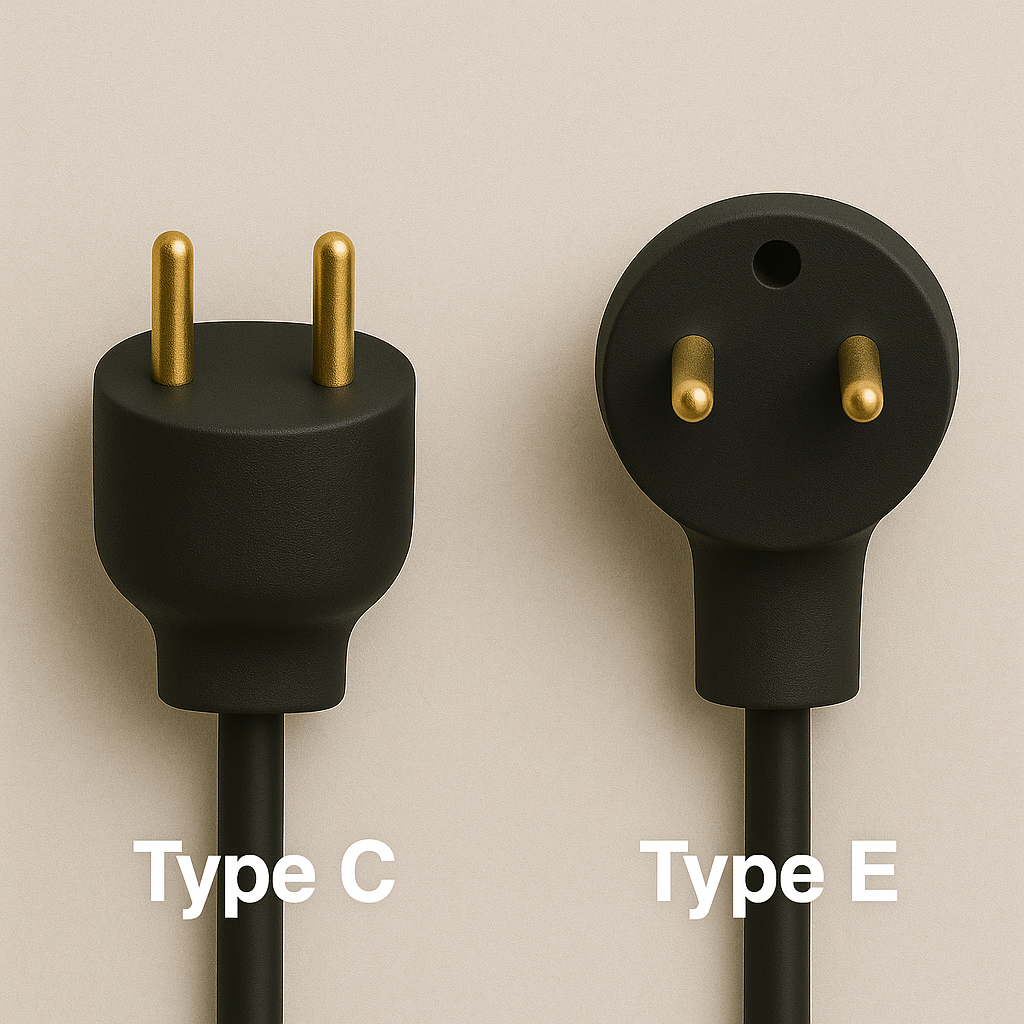
First Things First: The Plug Shape Is Different
In France — and across most of Europe — the plug shape is different from what you’re used to if you’re from North America for example. You’ll need a power adapter to fit your electronics into the local outlets, which typically accept the Europlug (also known as Type C) or Type E plugs, both featuring two round pins.
So yes, you’ll need a power adapter to make your plug fit the socket.
But Wait — It’s Not Just About the Plug
What a lot of people don’t realize is that the voltage is also different — and that can actually damage your electronics if you’re not careful. For exemple:
• U.S. voltage: 110–120V
• France (and most of Europe): 220–240V
This isn’t meant to scare you — in fact, most modern devices are totally fine. But I’ll show you how to check and what to watch out for
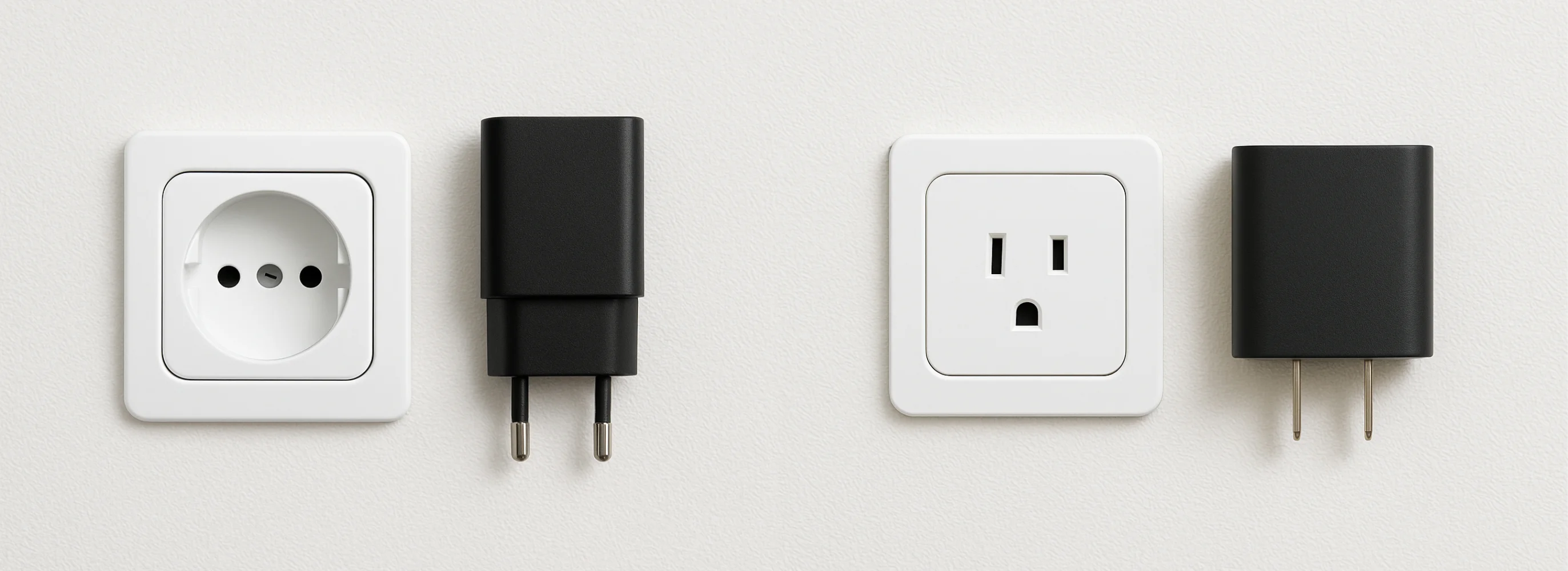
Good News First: Your Everyday Devices Are Usually Fine
Things like your:• Phone• Laptop• Tablet• Bluetooth earphones• E-reader
…are generally dual voltage. That means they’re designed to work anywhere in the world. Just plug them into an adapter, and you’re good to go!
Most chargers have something printed like “100-240V ~ 50/60Hz” — that’s what you want to see.

The Devices That Might Cause Trouble
Where things get tricky is with older or heat-generating appliances. These are more likely to be single-voltage — and not compatible with European outlets.
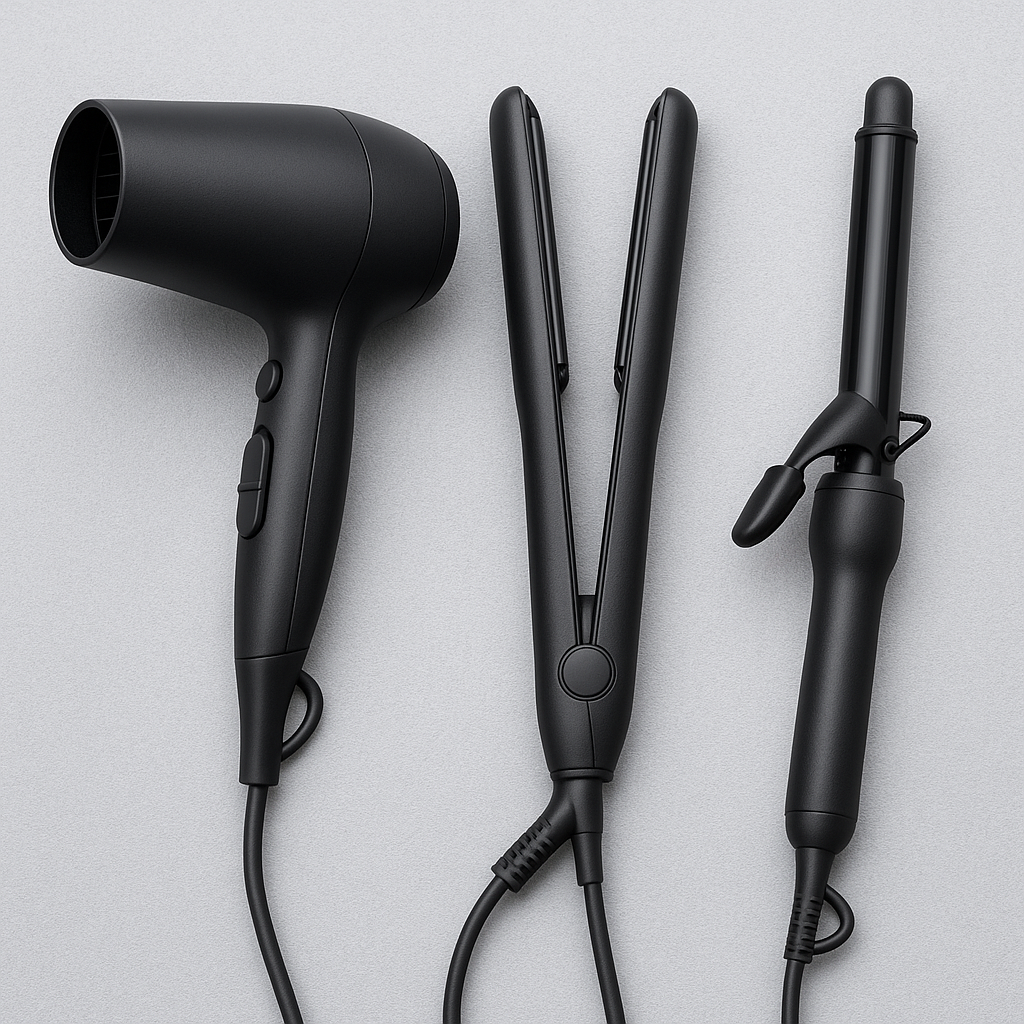
The biggest offenders?
• Hair dryers
• Curling irons
• Flat irons
If you’re attached to a particular hair tool, you might want to check before packing it. Otherwise, you risk blowing a fuse (literally), overheating your device, or even damaging it.
Other devices to double-check:
• Electric toothbrush chargers
• CPAP machines
• Camera battery chargers
• Older electronics
These are more likely to be single-voltage (U.S.-only) and may not work safely in France.
How to Know If Your Device Is Dual Voltage
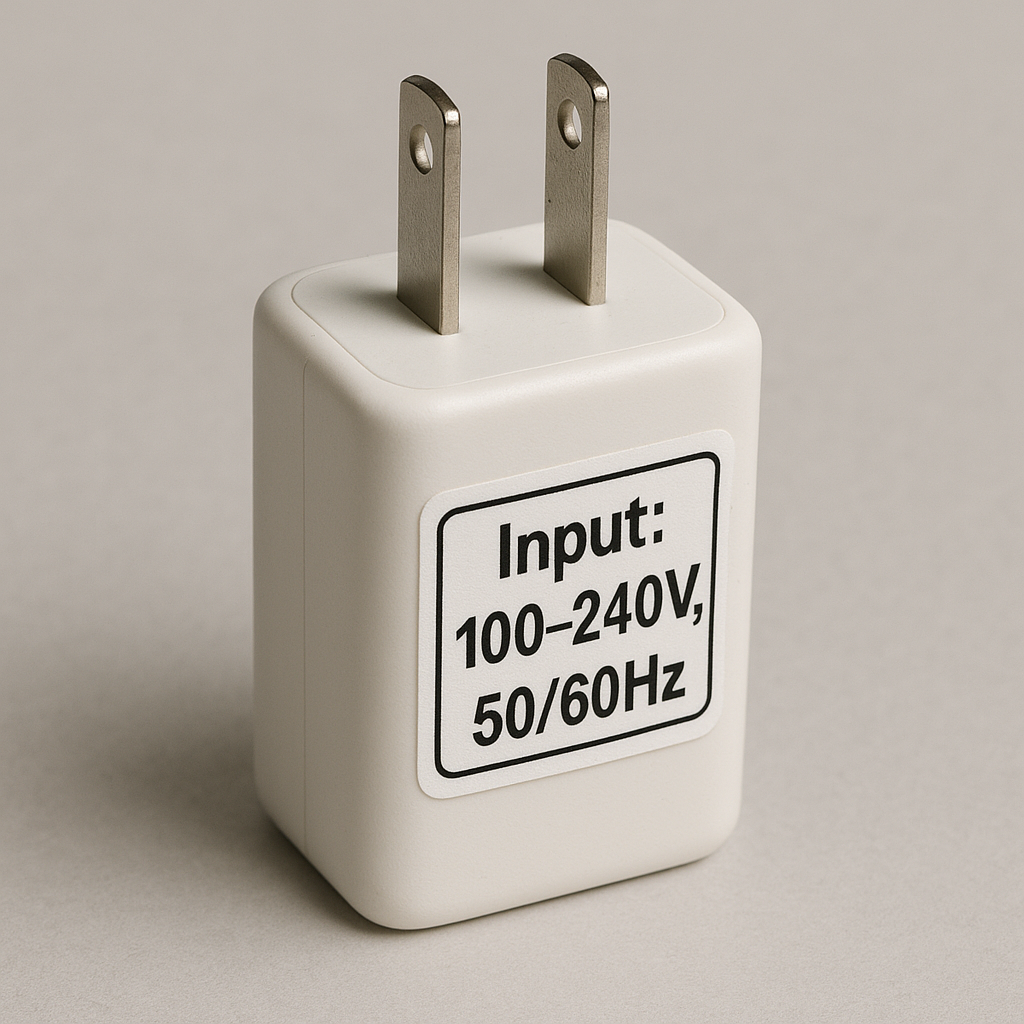
Here’s a quick trick I always use:
Look for a label (usually on the charger block or device itself). You’re looking for something like:
Input: 100–240V ~ 50/60Hz
✔️ If you see that — you’re safe!
❌ If it only says 110V or doesn’t mention a range — don’t plug it in without a converter.
What If Your Device Isn’t Compatible?
If you absolutely want to bring your curling iron or another single-voltage tool, you’ll need a voltage converter (also called a transformer).
Here’s the difference:
• Power Adapter: Changes the shape of the plug.
• Voltage Converter: Changes the electricity to the correct level.
Voltage converters are a bit bulkier, and not something I usually travel with unless I really need a particular device.
A Quick Word on Frequency
You might also notice the frequency in France is 50Hz vs. 60Hz in the U.S. — but honestly, for most portable electronics, it makes zero difference. Only larger home appliances (think washing machines or microwaves) are affected.
So unless you’re trying to fit a blender in your carry-on, you can forget about frequency.
What If You’re Visiting Multiple Countries in Europe?
Europe isn’t totally unified when it comes to plugs. Most countries use type C or E like France, but some use different ones:
• Type G: UK, Ireland, Malta, Cyprus
• Type J: Switzerland, Liechtenstein
• Type K: Denmark
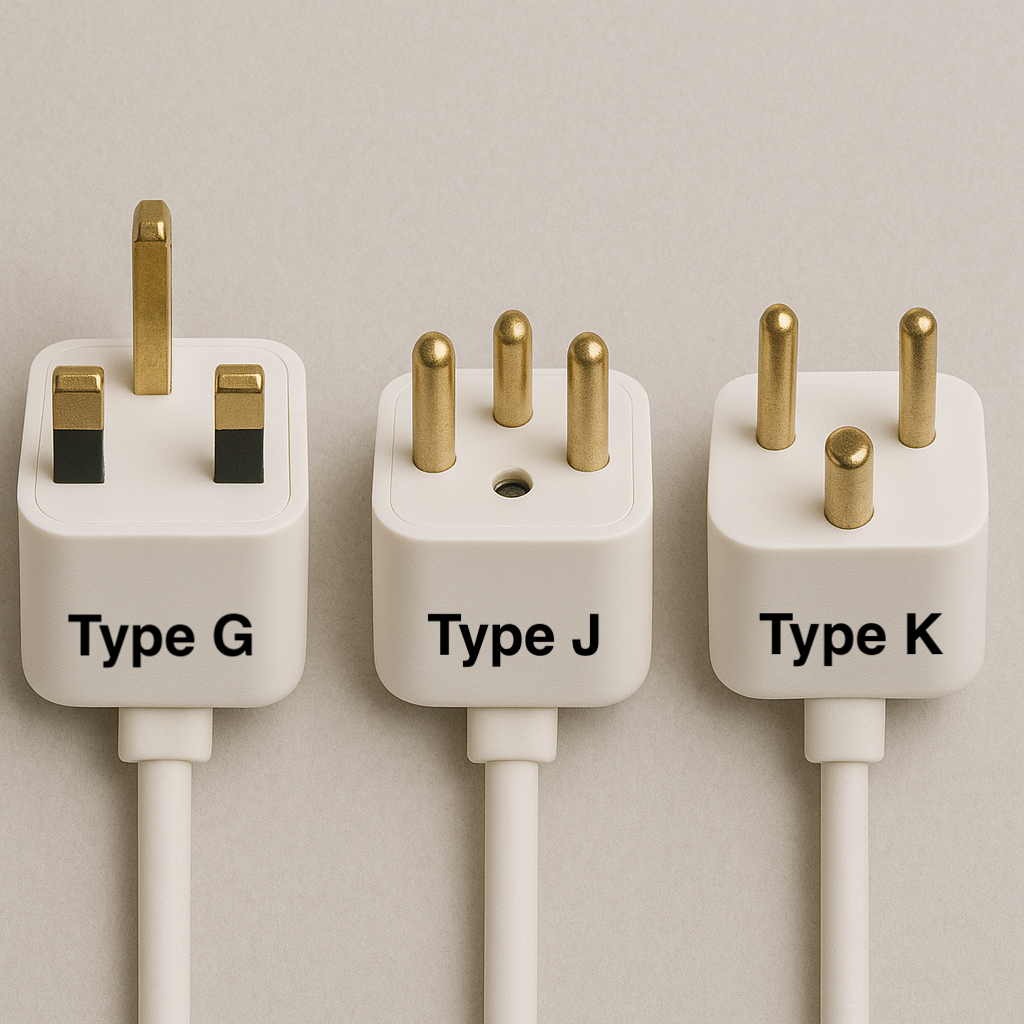
My tip: Bring a universal or international power adapter.
It’s what I personally use when hopping between countries — and it saves you from carrying multiple adapters.
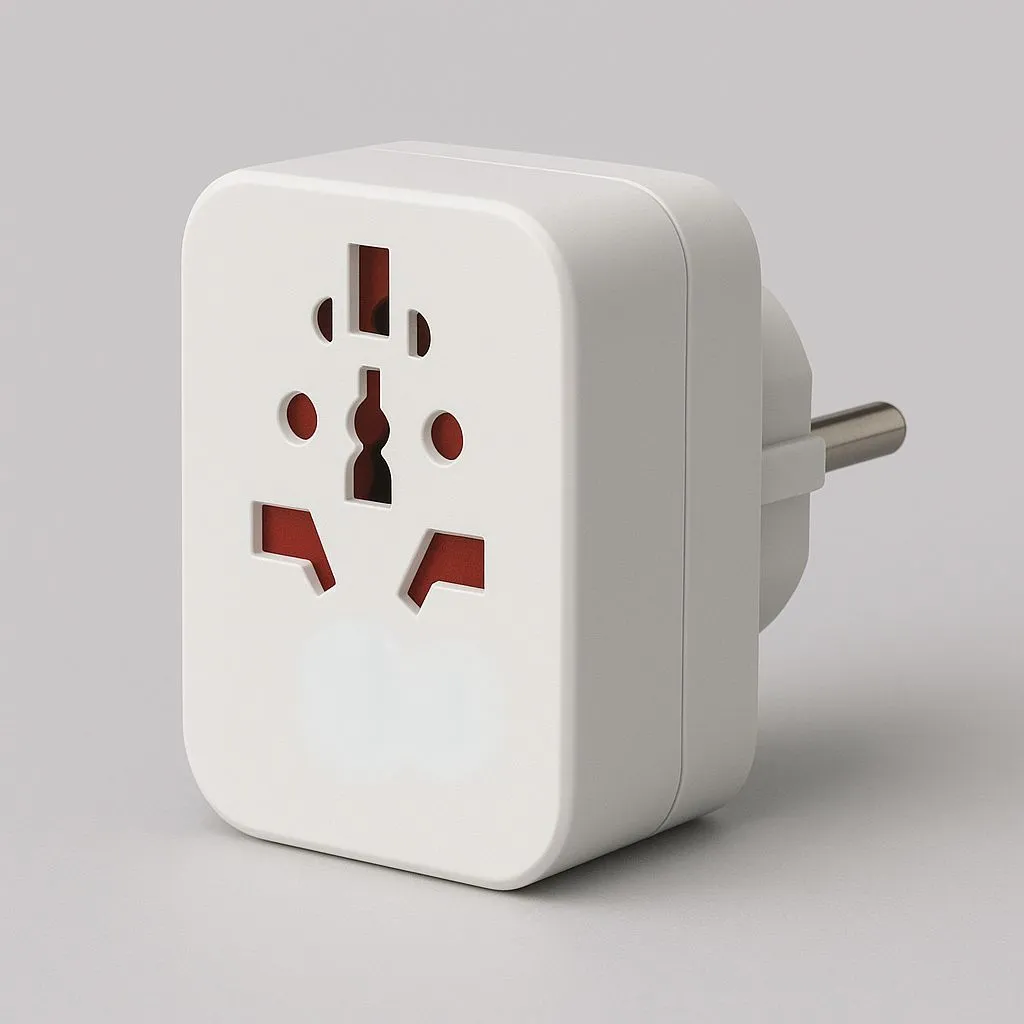
Final Recap — What to Remember Before You Pack
• ✅ Yes, you need a power adapter for France.
• ✅ Your phone, tablet, and laptop will probably be fine — just check the label.
• ✅ Hair tools and some chargers? Might need a voltage converter.
• ✅ Don’t forget to check the label: “100–240V” means you’re safe.
• ✅ Traveling through Europe? Consider a universal adapter.
That’s it! I hope this helped make things clearer. When it comes to electronics, it’s always better to check before you pack — and with just a bit of planning, your devices will be just as ready for the trip as you are.





